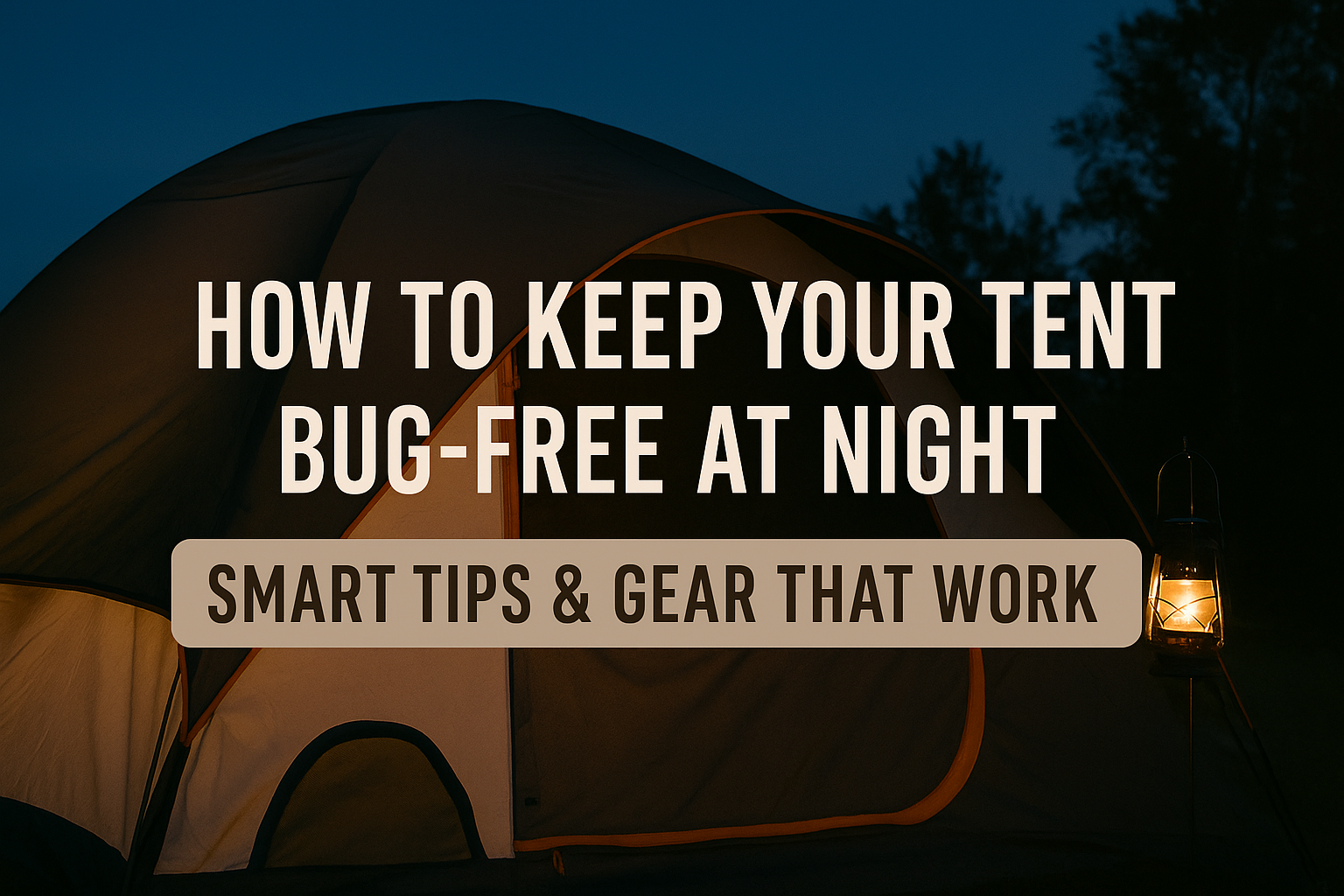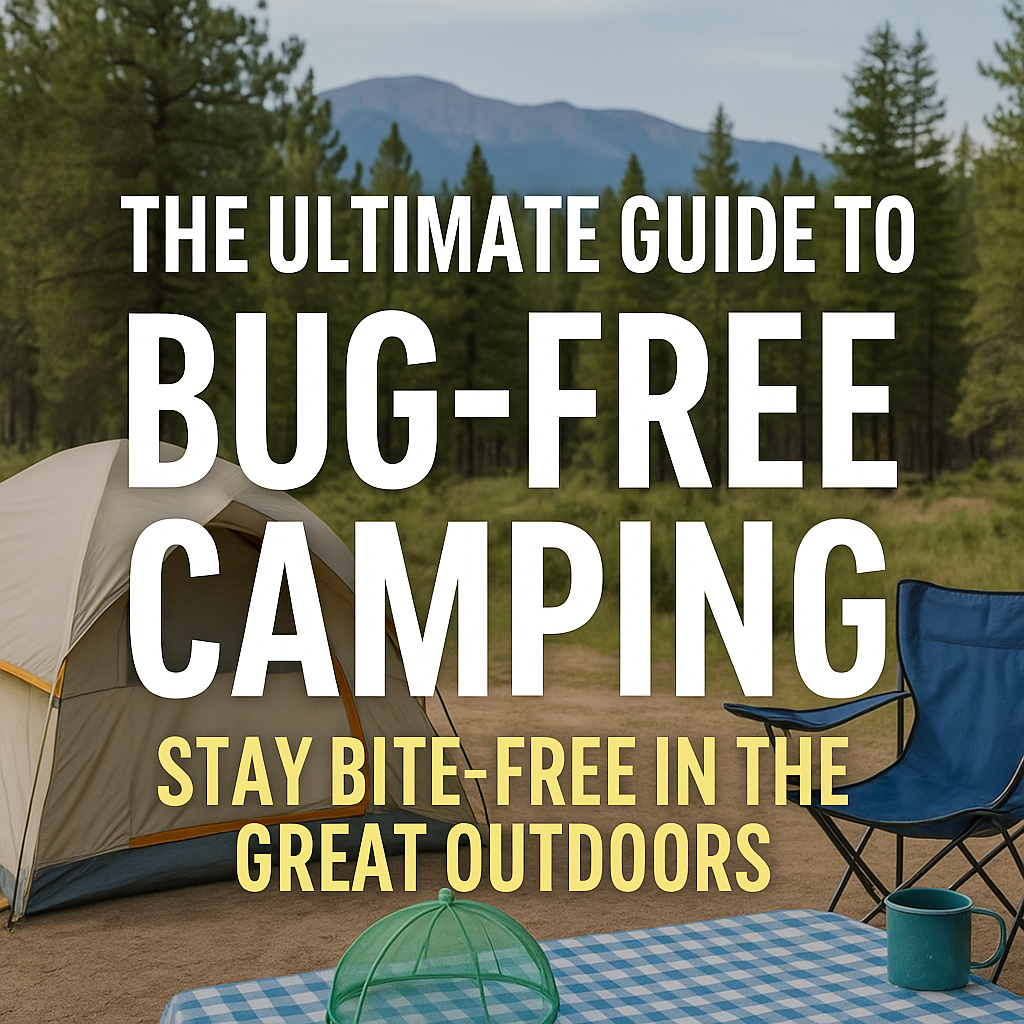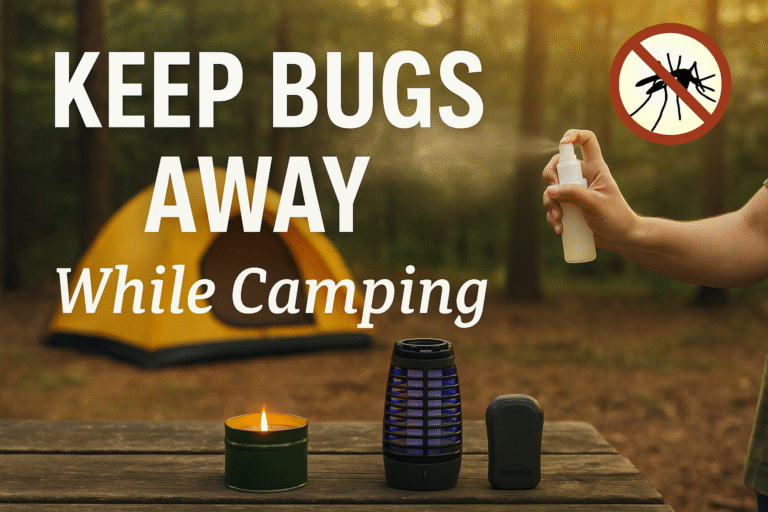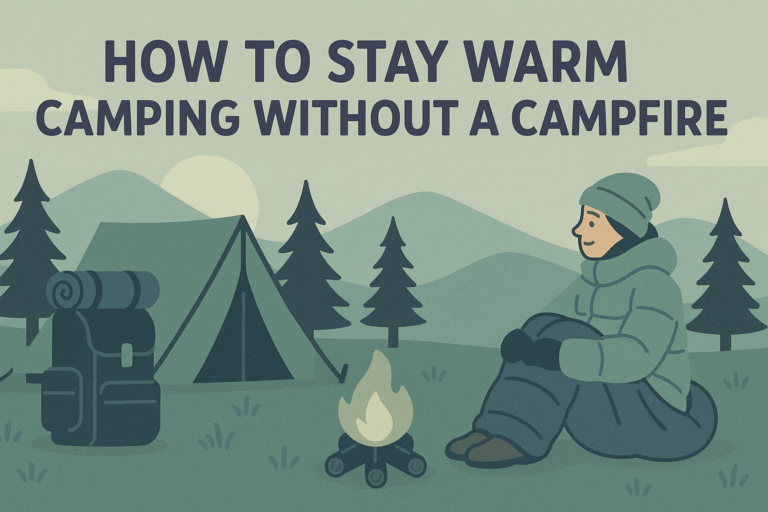
Nothing ruins a night’s sleep faster than the buzz of a mosquito in your tent. Whether you're dealing with mosquitoes, gnats, spiders, or ticks, keeping your tent bug-free isn't just about comfort — it’s about safety and sanity. This guide shows you how to seal your tent, use the right repellents, and choose smart gear so you can actually sleep peacefully in the great outdoors.
For a broader guide to avoiding bugs on your entire trip, check out our Ultimate Guide to Bug-Free Camping.
📑 Table of Contents
🔍 Why Bugs Get Into Your Tent
Even with your tent zipped, bugs can find their way in through tiny tears, vents, or when you're entering and exiting. Here’s what typically causes an infestation:
- Unzipped doors (even briefly!)
- Improperly sealed mesh or floor seams
- Leaving lights on inside the tent
- Food or scented items stored inside
- Tent pitched near water or dense vegetation
🛠️ Tent Sealing and Setup Tips
Before buying sprays or gadgets, start with the basics:
- Inspect your tent: Check for holes in mesh, zippers, and seams. Repair with patch kits or duct tape.
- Always zip the door: Teach kids and first-timers to zip it up instantly — even during the day.
- Seal the floor: Use a footprint or tarp under your tent to prevent crawling bugs from getting in.
- Keep lights off inside: Use red-light mode or turn off lanterns before unzipping the door.
🧴 Use Repellents Inside and Around Your Tent
Some repellents are safe to use near (or even inside) your tent, especially on the mesh or outer walls. Be sure to read all labels first.
Safe Bug Repellents for Tent Areas
- Sawyer Picaridin Lotion – Great for personal use before bed; non-greasy and doesn’t damage gear.
- Thermacell MR450 Repeller – Works just outside your tent to create a 15-foot bug-free zone.
- Permethrin Spray – Treat your tent exterior (not for skin). Lasts multiple washes or trips.
🧢 Clothing Choices That Prevent Bugs in Bed
What you wear to sleep matters too. Bugs can bite through thin fabrics, especially in humid or mosquito-heavy areas.
- Sleep in long sleeves and pants made of lightweight synthetic material.
- Wear socks to block ankle bites — a common spot for mosquitoes.
- Choose clothing pre-treated with Permethrin for extra protection.
📦 Best Gear to Keep Your Tent Bug-Free
- Coghlan’s Mosquito Net – Easy to hang inside or over your sleeping area.
- Portable Bug Zapper Lantern – Works inside the tent if rated safe for enclosed areas.
- Repair Patch Kit – Fix mesh holes or floor leaks in seconds.
✅ Tent Bug-Free Checklist
- Fully zip tent door every time
- Inspect mesh and seams for damage
- Use a ground tarp or footprint
- Apply Permethrin spray to tent exterior
- Sleep in long sleeves, pants, and socks
- Keep food and toiletries outside the tent
- Place Thermacell or netting around entry points
🙋♀️ FAQ: Bugs in the Tent
Can I spray bug spray inside my tent?
Only if it’s labeled safe for enclosed spaces. Most sprays are not intended for use inside a closed tent. Use a Thermacell or net instead.
What’s the safest bug repellent for nighttime?
Picaridin lotion is a great option. It’s less greasy than DEET, has no strong odor, and won’t damage gear or clothing.
Should I sleep with the tent vents open?
Yes, ventilation is important — just make sure vents are screened and undamaged. Good airflow reduces sweat and CO₂ buildup, which attract bugs.
🌙 Final Thoughts: Sleep Tight, Bug-Free
Keeping bugs out of your tent doesn’t require expensive gear or military-level planning — just good habits, smart prep, and a few key items. Use these tips and enjoy peaceful, uninterrupted sleep in the wild. For more strategies, explore our full Bug-Free Camping Guide.






